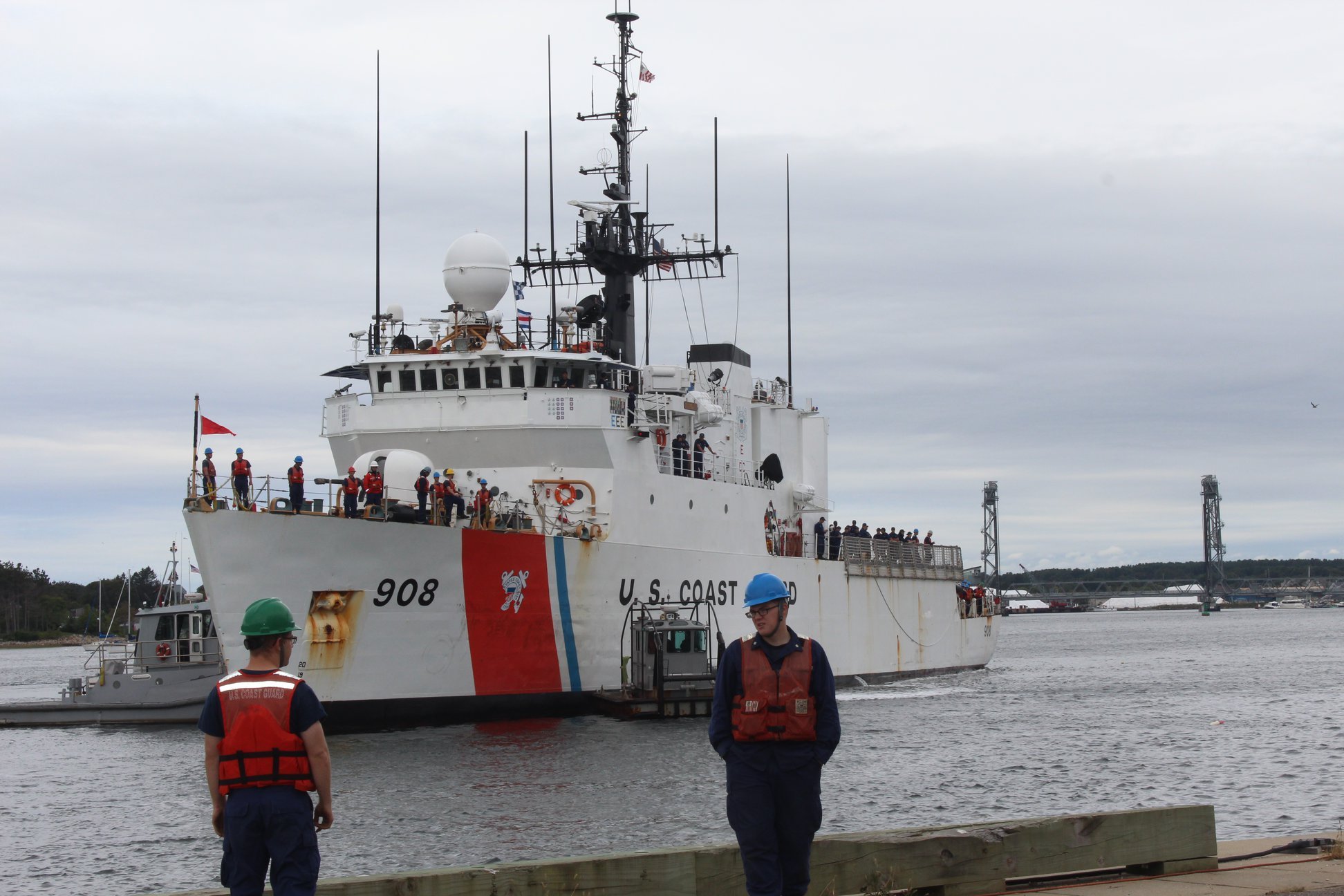
The Coast Guard for the first time in years sent one of its medium-endurance cutters to the Atlantic Ocean north of the Arctic Circle, as the sea service joins the U.S. and Canadian navies for a yearly maritime exercise.
Speaking at a virtual event hosted by the American Society of Naval Engineers on Tuesday, Coast Guard commandant Adm. Karl Schultz said the service sent the cutter north to partake in Canada’s Operation Nanook.
“That’s up off of Greenland. We haven’t had a medium-endurance cutter north of the Arctic Circle in the Atlantic in decades, so we’re excited about that,” Schultz said.
Vice Adm. Steven Poulin, who commands Coast Guard Atlantic Area, told reporters Tuesday that USCGC Tahoma (WMEC-908) is the first Famous-class medium cutter to travel that far north. The Coast Guard sent Tahoma with an embarked helicopter detachment to take part in the Nanook exercise.
“The Coast Guard has operated in the Arctic as the nation’s primary maritime presence for 150 years. Our participation in Operation Nanook is a continuation of that presence, but it also reflects the importance of partnership, collaboration and unity of effort,” Poulin said. “And that unity effort is focused on the shared goal of a safer, environmentally-protected Arctic as human activity increases and there’s a growing strategic interest in the region.”
Operation Nanook, which began this week, is slated to continue through Aug. 24 and is meant to help the Coast Guard, Navy and international partners learn how to perform operations cooperatively in the Arctic region.
Destroyer USS Thomas Hudner (DDG-116), one Danish frigate and one French patrol vessel will also partake in the exercise, according to a Navy press release. Three Canadian ships – Halifax-class frigate HMCS Ville de Quebec (FFH-332), Kingston-class coastal patrol ship HMCS Glace Bay (MM 701), and fleet oiler MV Asterix – are also joining, the service said.
Navy officials in the last several years have raised alarms over increased Chinese and Russian activity in the Arctic region. But Rear Adm. Brian Santarpia, Canada’s Maritime Forces Atlantic commander, said he does not expect to face any Russian activity during Nanook.
Vice Adm. Andrew Lewis, the commander of U.S. 2nd Fleet, said the exercise will allow sailors to practice “basic tactical operating in the higher latitudes” and and get acclimated to the colder temperatures in the region.
“They’ve got some great capability – they’ve got a helicopter detachment onboard. They’ve got an enhanced medical capability onboard as well,” he said of Hudner. “We’re going to learn a lot from our Canadian and Coast Guard” partners.
Lewis said the Navy for the first time recently will put a rigid-hull inflatable boat in the colder water.
“This is a standard destroyer, with a standard RHIB crew, with a [search and rescue] swimmer and a boatswain’s mate who’s driving the RHIB around. So it’s by nature a fairly challenging environment anyway, wherever you are,” Lewis said.
Santarpia said the exercise will include “tactical scenarios” for participants to work through in the northern waters.
“There’s some gunnery serials. There’s some serials where we will have one vessel be a vessel of interest and have to be located by the other vessels in order to be tracked and understood in case that vessel was conducting criminal activity, or environmental … that sort of thing,” he told reporters.
The ships will refrain from port stops during the operation because of the COVID-19 pandemic.
Poulin said the Coast Guard plans to apply knowledge gleaned from Nanook to send a different medium-endurance cutter to an upcoming search and rescue exercise called Argus, which takes place off the coast of Greenland and also includes France, Canada, and Denmark.
“This will be the first time that we’ve deployed a cutter to support Argus, so we’re excited about that as well,” Poulin said.
Asked about recent events as they relate to the value of this year’s exercise, Poulin pointed to global interest in the Arctic.
“This is a general trend, but I think it’s an increasing trend of human activity in the Arctic, opening waterways, but also growing international interest in resources and sources of protein,” Poulin said. “And obviously interest in strategy positioning, global strategic positioning. So I think it’s important that we continue to showcase our mutual commitment to safety, security and environmental protection.”





